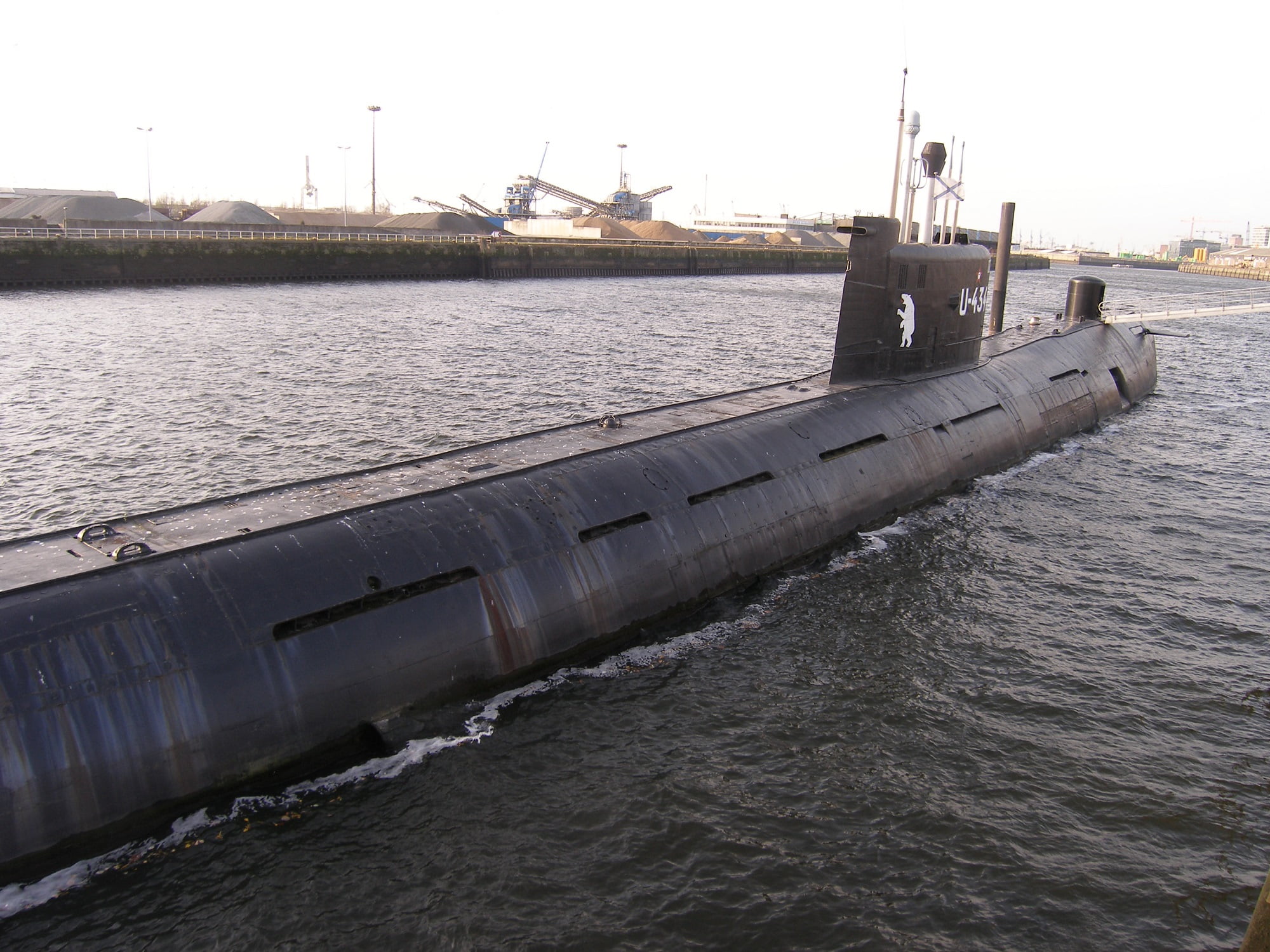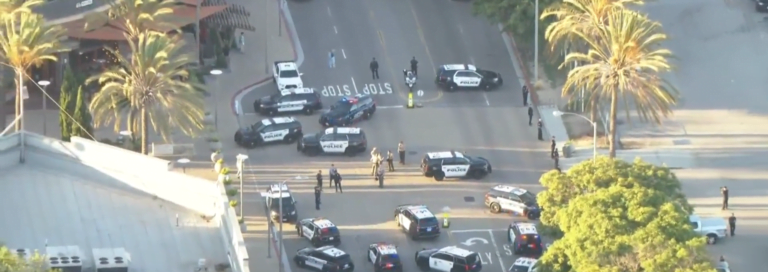Two Swedish Fishermen Found A Russian Submarine And Started A National Crisis

Two Swedish Fishermen Found A Russian Submarine And Started A National Crisis
KEY POINT: This incident led to a decade of heightened submarine surveillance by the Swedish Navy. Despite deploying numerous torpedoes, depth charges, and mines during various encounters, it appears that no Soviet submarines were actually destroyed.
On the morning of October 28, 1981, two Swedish fishermen were on their way back to Karlskrona with their catch when they noticed a mysterious oil slick. One of the fishermen, Bertil Sturkmen, later returned to the area to investigate. At 10 a.m., he stumbled upon a startling sight: a seventy-six-meter-long submarine wedged on its starboard side against the sharp rocks of Torumskär island. An officer stood on the submarine’s conning tower, staring at him through binoculars and holding a machine gun.
Sturkmen sailed back to Karlskrona and promptly alerted the nearby Swedish naval base, which housed two of Sweden’s three coastal defense flotillas. Karlskrona was well-protected due to its location in a shallow bay shielded by a belt of rocky islands that required careful navigation. Remarkably, the submarine had managed to navigate this complex aquatic obstacle course and end up just six miles away from the base.
The patrol boat Smyge reached the grounded vessel by 11 a.m., and Commander Karl Andersson managed to communicate with a crew member in German. The crew member explained that the submarine had strayed off course due to a faulty navigation system.
The submarine in question was S-363, a Soviet Whiskey-class coastal patrol submarine. This incident earned the nickname “the Whiskey on the Rocks.” (At the time, the submarine was widely misidentified as U-137.) This short-range diesel-electric submarine, with a crew of 56, had been designed in the 1940s and incorporated snorkel and battery technology inspired by the Nazi Type XXI “electric boat.” The Soviet Union had produced more than two hundred submarines of this class.
Sweden’s extensive Baltic coastline faced Leningrad and Soviet bases in the Baltic states and Poland. While international law stipulates that a country’s territorial waters extend twelve nautical miles (fourteen miles) from its mainland and island territories, Soviet submarines had been repeatedly detected intruding into Swedish waters during the 1960s and 1970s. Swedish vessels had even fired at them on multiple occasions, seemingly without any impact.
Sweden was theoretically neutral during the Cold War, but its perceived alignment with the West seemed to motivate Soviet intelligence-gathering activities. The Swedes reciprocated by shadowing Soviet ships and aircraft with their own jets and submarines, occasionally leading to tense confrontations. For example, in 1985, a standoff between Swedish Viggen and Soviet Su-15 interceptors resulted in a fatal collision.
Interestingly, on the evening of October 27, just before the incident, the Swedish submarine Neptune and two helicopters had been testing a new type of torpedo that may have piqued Soviet interest. It was during this time that S-363 ran aground, and its crew revved its diesel engines in an attempt to escape, generating a noise heard from the shore.
As news of S-363’s grounding spread, journalists and boats swarmed around the submarine. Stockholm demanded the right to interrogate the submarine’s captain, Anatolij Gustjtjin. Moscow, on the other hand, claimed that S-363 had entered Swedish waters seeking assistance, although the submarine had not issued a distress signal.
Swedish radars then detected a task force of a dozen Soviet ships heading toward S-363. Led by Admiral A. Kalinin, this fleet included the missile destroyer Obraztsovy, an older gun-armed destroyer, two anti-ship missile boats, a frigate, and a tug.
While the submarine Neptune did its best to slow down the approaching fleet, the icebreaker Thule was maneuvered into position to block access to S-363. Radar guided coastal guns turned on their targeting radars as the Soviet task force advanced. These radars were designed to hop between multiple frequencies to evade counter-battery fire, and this finally compelled the Soviet warships to halt. However, a lone tug continued to advance until Swedish torpedo boats blocked its path.
In the meantime, Swedish ships conducted gamma-ray spectroscopic analyses of S-363 and detected trace amounts of what seemed to be Uranium 238. This discovery suggested the presence of a nuclear weapon on board. In the 1950s, the Soviet Union had developed various nuclear torpedoes, including smaller types designed to disable multiple enemy vessels and a larger variant intended for striking naval bases and coastal cities—an idea that has recently seen a resurgence of interest. Notably, the Whiskey-class S-144 had tested a T-5 anti-ship nuclear torpedo with a five-kiloton warhead in 1957.
Following several days of prolonged negotiations, Captain Gustjtjin, accompanied by political officer Vassily Besedin, voluntarily underwent a six-hour interrogation aboard the torpedo boat Vastervik on November 2. Captain Gustjtjin maintained that S-363 had suffered a malfunction in all four of its navigation systems, causing it to drift a hundred miles off course from the coast of Poland. The Swedish interlocutor, however, thought that such an explanation would be “worthy of the Guinness Book of World Records” given that sailing into Karlskrona Bay from such a distance would have required a series of exact manoeuvres.
In the midst of these proceedings, a storm suddenly erupted, obscuring Swedish radar readings. Once the storm had passed, two vessels were detected approaching Swedish waters. Fearing another Soviet incursion, Prime Minister Falldin ordered naval strike planes to scramble and placed coastal defenses on standby to defend territorial waters. However, after twenty minutes, it was determined that the approaching vessels were, in fact, German merchant ships.
Finally, after a tense ten-day standoff, Moscow granted permission for the Swedes to free the grounded submarine. Swedish tugboats successfully refloated the Soviet sub and handed it over to Admiral Kalinin’s task force. On November 7, S-363 returned to port.
Political officer Besedin later shared with a Swedish journalist:
If Swedish military forces attempted to seize the submarine, “our officers were given the order to scuttle the submarine and its crew. These directives would have been carried out. Onboard, within the torpedo tubes, were torpedoes armed with nuclear warheads. The destructive power of detonating such a nuclear warhead is on par with the impact of the bomb dropped over Hiroshima. Contemplating the scale of destruction and the long-term consequences for Sweden as a whole is a chilling prospect.”
Karl Andersson challenged Besedin’s account, contending that the submarine would have been scuttled by disabling the propeller shaft and valves rather than detonating onboard nuclear warheads.
Besedin further asserted that a navigational error had occurred due to damage from an earlier collision, which forced S-363’s crew to rely on less precise methods. An alternative theory suggested that the submarine might have been testing a new but unreliable inertial navigation system.
This incident marked the beginning of a decade marked by intensified submarine surveillance efforts by the Swedish Navy. Despite deploying numerous torpedoes, depth charges, and mines in numerous encounters, it seems that no Soviet submarines were actually destroyed. Concurrently, Stockholm initiated efforts to enhance the stealth and endurance capabilities of its coastal defense submarines by developing advanced Air-Independent Propulsion technology.
The intensified submarine surveillance efforts sparked domestic controversy. Right-wing factions in Sweden saw the U-137 incident as evidence of the Soviet Union’s hostile intentions, reinforcing the need to bolster military deterrence. Conversely, some left-wing Swedes suggested that the Swedish Navy was overreacting and that the submarine sightings might have involved NATO submarines trying to provoke Sweden against the Soviets.
The infiltrations by submarines appeared to subside with the conclusion of the Cold War, but not permanently. As relations between Russia and the West sharply deteriorated in 2014, following Moscow’s annexation of the Crimean Peninsula from Ukraine, the Swedish Navy spent a week attempting to track a mini-submarine that had reportedly been sighted multiple times in Swedish waters.






